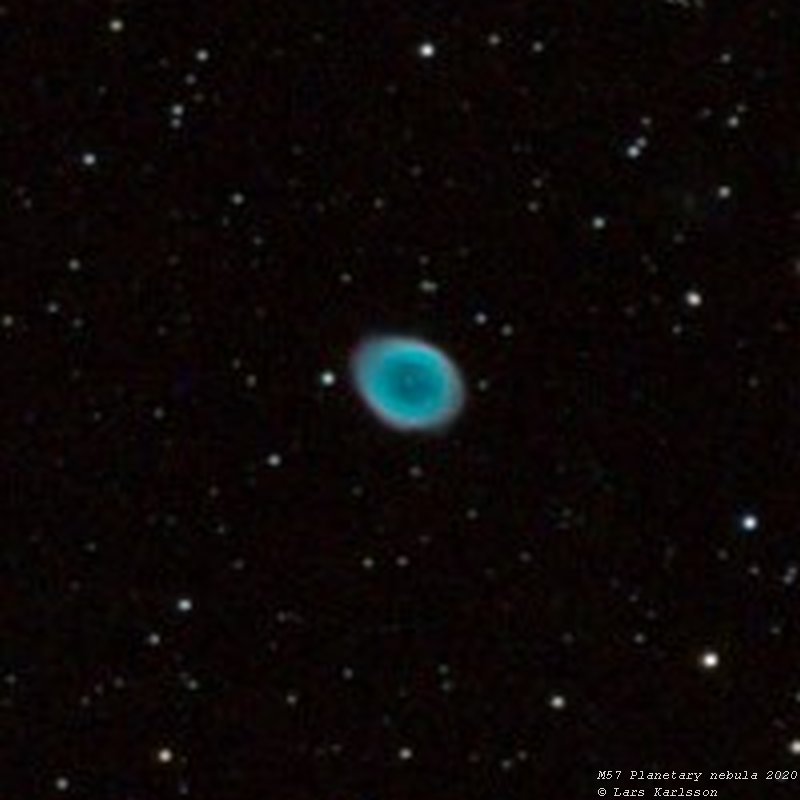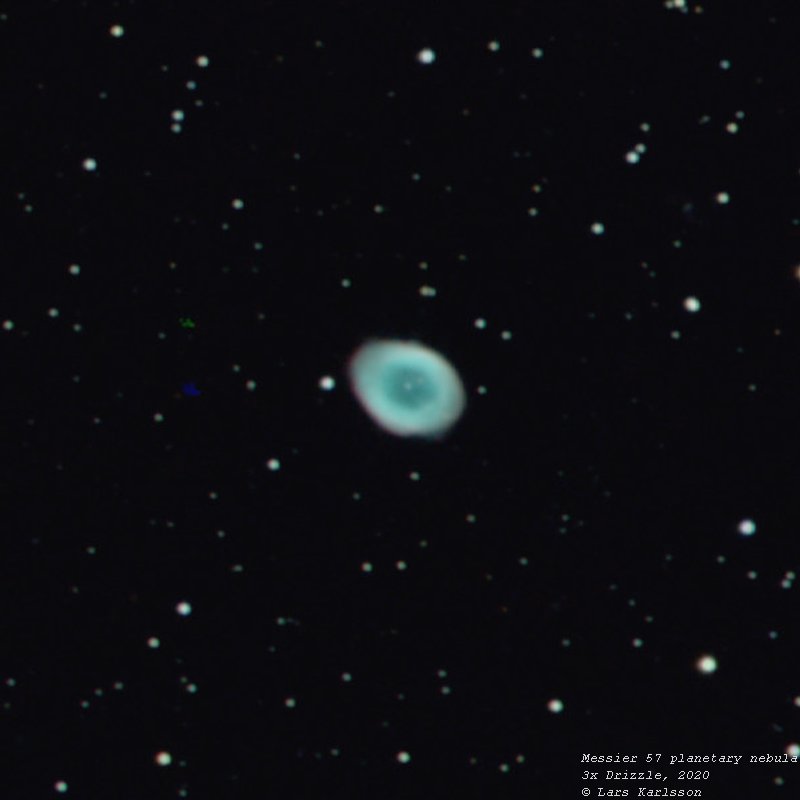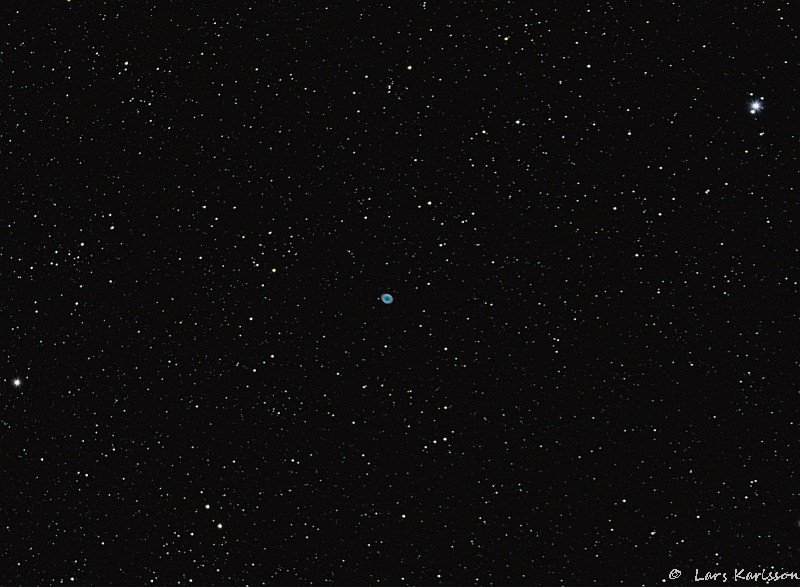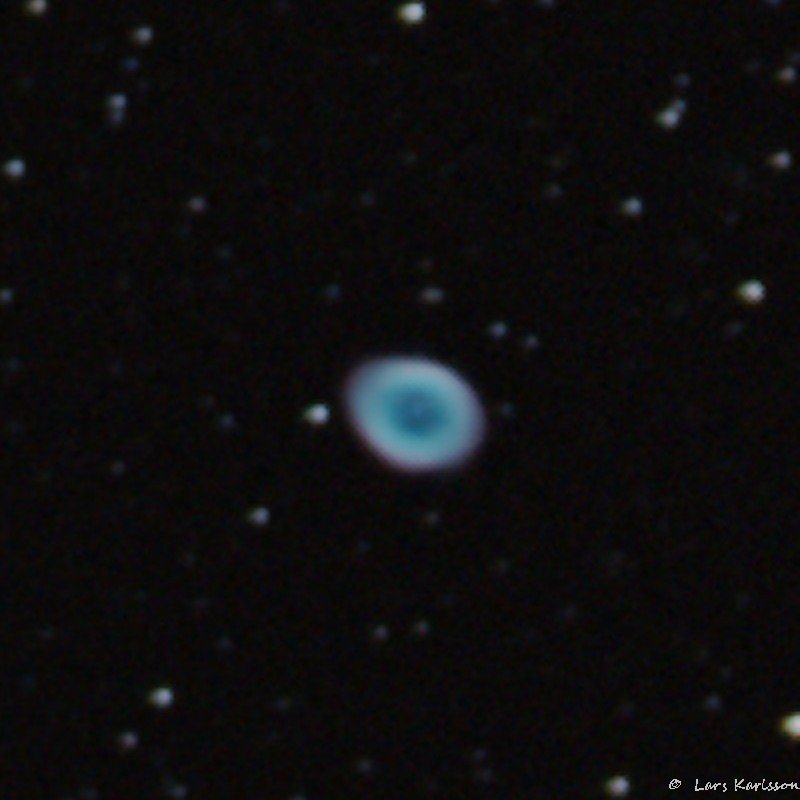| Object : | M57, Ring Nebula |
| Coordinates/Direction : | center of image, RA 18h54m, Dec +44 03' |
| Object size : | 230" by 230" |
| Object magnitude : | 7.8 |
| More to know : |
Wikipedia:
https://en.wikipedia.org/ wiki/ Ring Nebula |
| Exp. time : | 30x60 seconds, ISO1600, dithering mode |
| Image process tool : | Siril, Gimp, Irfanview |
| Processing : | Dark and flat calibrated |
| Weather : | clear sky, full Moon, outdoor temperature -6o C |
| Comment : |
With my Pentax 645 300 mm ED lens I'm curious, what can it do at planetary nebulas ?
Almost nothing can be seen on the photo above, but click on the image and look at the full resolution image.
Not too bad, the size of it is only 1/6 of the Moon's diameter.
The nebula is called the Ring Nebula.
This isn't the correct color and the red outer edge can't be seen. |
| Date : | 2023-03-09 |
| Time (UT) : | 01:35 to 02:13 |
| Comment : |
This extremely zoomed in version of the M57 is color calibrated, as a source I used stars with known color profiles.
This is done in Siril and is almost automatic, it should always be done even if I haven't done it all times.
Something about resolution:
The Pentax lens' front lens has a diameter of 75 mm, with that the theoretical resolution at the green wave length is 1.55".
But no lenses is perfect, say it has half this resolution, 3".
The seeing when it's very good is about 2", but more often 4".
The cameras pixel size is 6.55 my, with a focal length of 300 mm the pixel scale get to 4.5"/pixel, way too high.
The Nyquist theorem say it can be sampled by two.
A pixel size of 1.5 my had been better if we only look at the resolution.
This camera is a color camera, all three color channels, RGB, shear the sensor's pixels.
The color pixels that not have its own pixel is interpolated. In reality my camera more looks to have a pixel size of 13my, not 6.55my.
What can I do to get better resolution ?
I can buy a new camera with smaller pixels, even better if it's a mono chrome camera.
Another solution is to use a technique that is called Drizzle that can quadruple the number of pixels.
To get that to work the photos must be moved a little bit between each exposure.
That is called Dithering and I always use that enabled.
In reality it's not so easy to use Drizzle.
There are disadvantages with small and many pixels too.
More pixels means that I must have bigger hard drives to store all my images, half the pixel size, four times more space.
Small pixels means that each pixel collects less number of photons per time unit.
Half the size get only 1/4 photons.
The exposure time must be increased by four times to equal the bigger pixel in S/N (noise).
More, the mount and its guiding must of course be better than the resolution I want to reach, at least with a factor of 2.
My EQ6 and HEQ5 mounts has a total RMS guiding error from 1" to 1.5" so it's not a problem.
Look here about my equipment pixel scales: Astrophoto main page. |
| Exp. time : | 90x60 seconds, ISO1600, dithering mode |
| Image process tool : | AstroImageJ, Fitswork, IrfanView |
| Processing : | demosaic, synthetic synthetic flat calibrated, hot pixel removed by dithering, level |
| Weather : | clear with drifting clouds |
| Comment : |
My APO refractor with a focal length of 910 mm is my biggest telescope today.
But on a tiny object like the M57 it doesn't deliver what I want.
M57 is the little blue dot in center.
The left over from a star explosion in the past.
One of the most beautiful objects on the sky.
I need a bigger telescope, twice the focal length and twice the opening.
My camera is a color camera, I need Drizzle technique to resample the image to twice the pixel density or a mono chrome sensor. |
| Date : | 2020-03-14 |
| Image process tool : | AstroImageJ, Fitswork, IrfanView |
| Processing : | demosaic, synthetic flat calibrated, hot pixel removed by dithering, level, crop |
| Comment : |
This is 4x zoom to simulate how M57 would look with the telescope of my dream.
With that telescope also the details will be better. |
| Date : | 2020-03-14 |
| Image process tool : | AstroImageJ, Gimp, IrfanView |
| Processing : | demosaic, synthetic flat calibrated, hot pixel removed by dithering, level, crop |
| Comment : |
This is a test with the Drizzle technique I have started to use.
This is a 3x Drizzle, it should increase the resolution from about 3" to 1", but hard to see because the seeing is worse than that.
Lot of practice needed to handle this technique.
The blue and green dots is from hot pixels, it's much more difficult to handle these when using the Drizzling technique.
To combine the three gray rgb images I this time used Gimp.
New to me but have a lot of useful tools.
It's the new version 2.10 that can take 32-bit floating fits files. |
| Exp. time : | 30x60 seconds, ISO800, dithering mode |
| Image process tool : | Fitswork, Irfanview |
| Processing : | crop, resize, stretch, flatten |
| Weather : | clear |
| Comment : |
A test photo shot from my balcony, very light polluted sky.
A planetary nebula is the left over from an old stellar explosion. |
| Date : | 2015-03-22 |
| Comment : |
A crop of the center, only 200x200 pixel. |
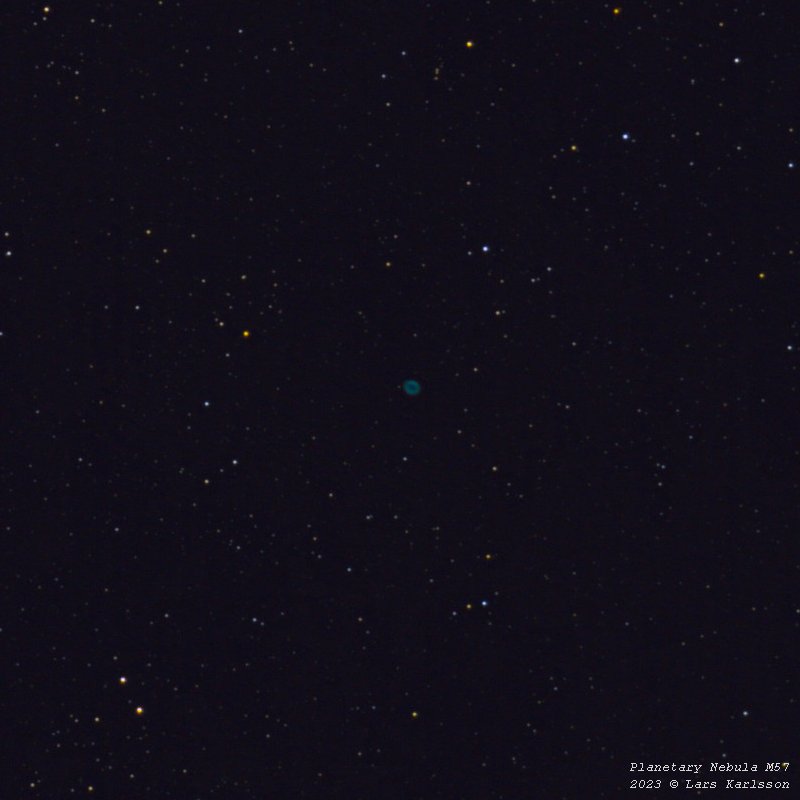 (click on the image to get a full resolution photo in a new window)
(click on the image to get a full resolution photo in a new window)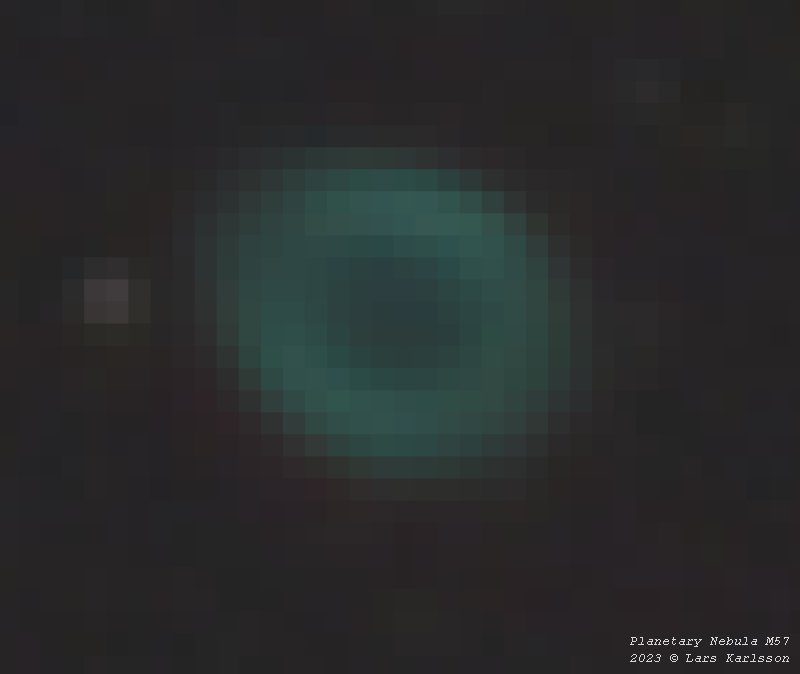
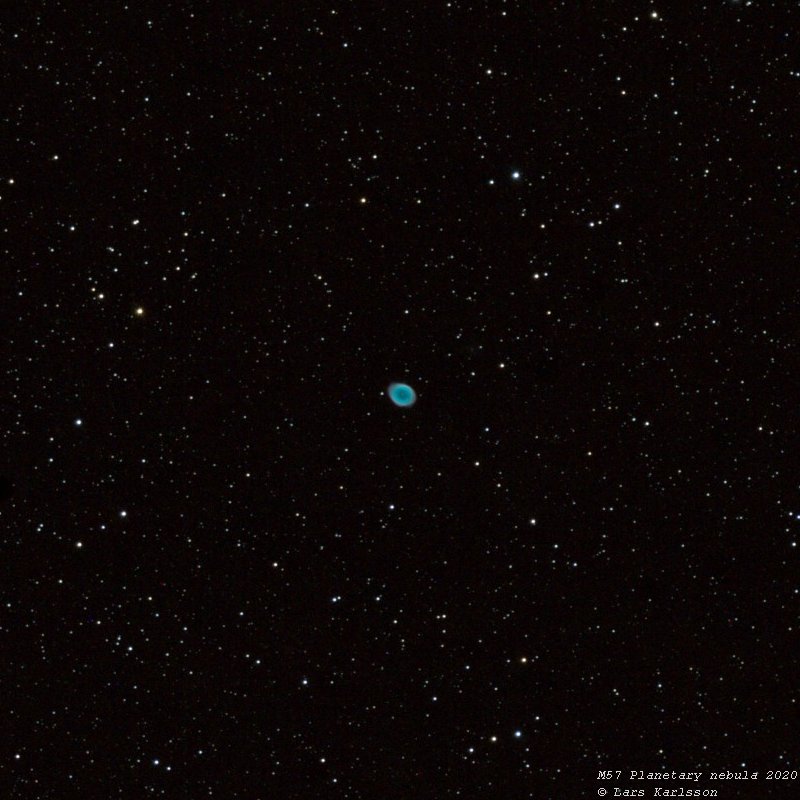 (click on the image to get a full resolution photo in a new window)
(click on the image to get a full resolution photo in a new window)